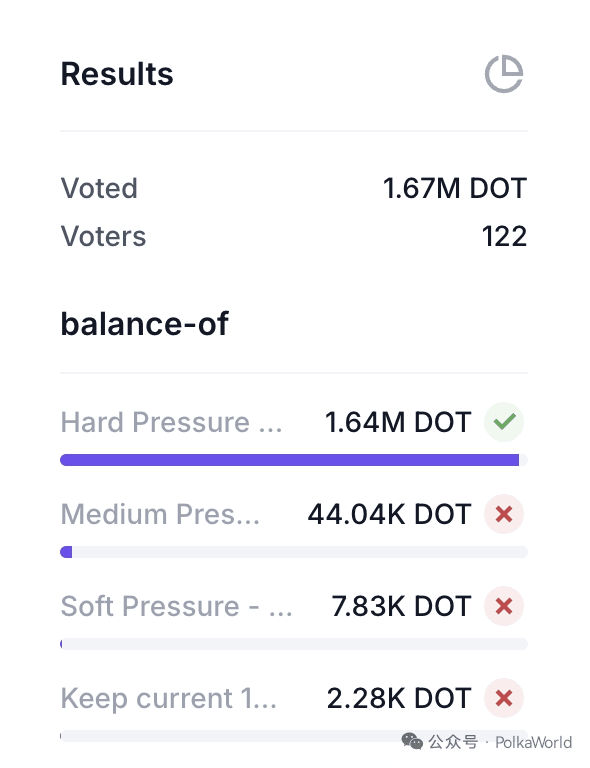
'Multi-chain architecture' has long been regarded as the golden narrative of Web3: each chain can flexibly expand according to its own needs, cooperate with each other, share security, connect value, and build a truly open and interconnected network universe.
Ethereum L2 is such a narrative; Cosmos is too, and so is Polkadot.
However, the ideal has not yet materialized, and the dilemma has quietly arrived.
When we review the current development status of mainstream L1 and L2 networks, a common issue emerges:
As the number of chains increases, users have not been able to keep up;
Technological breakthroughs continue, but product experience remains distant;
Capital is rapidly pouring in, but it is difficult to settle sustainable value.
Public chains with multi-chain architecture have long been trapped in a dangerous 'incentive cycle': issuing tokens, airdrops, price manipulation, selling off, and collapsing. Short-term heat can be easily generated, but long-term trust is increasingly scarce.
The crisis of Cosmos is not an exception, but a microcosm.
Take Cosmos as an example; at one time, this ecosystem was considered one of the best practitioners of multi-chain architecture.
Through staking ATOM → obtaining airdrops → supporting subchain projects, Cosmos once established one of the earliest and most active 'ecological flywheels' in the Web3 world:
Projects like Osmosis, JUNO, Evmos, Celestia, etc., have all been 'incubated' under this mechanism;
Users actively participate in staking ATOM, obtaining subchain token airdrops, and further participating in the governance or trading of these new projects;
Project parties quickly attract traffic and attention through airdrops, completing the initial cold start tasks.
This 'Stake-to-Earn + airdrop' mechanism once activated the vitality of the Cosmos community in a short time and allowed many projects to gain initial users and markets.
But the problem is that this mechanism itself lacks sustainability.
As more and more projects 'take off on airdrops', airdrops gradually no longer represent long-term construction, but just a one-time gain:
Users participate in staking only for arbitrage;
Project parties airdrop and then dump, lacking long-term incentive mechanisms;
ATOM's staking is diluted by high inflation, harming the interests of long-term holders;
Subchain value cannot feed back into ATOM itself, leading to 'ecological vibrancy, main chain sluggishness.'
Ultimately, when the market heat fades, the bubble of the airdrop economy bursts, and the ecosystem rapidly transitions from a peak to collapse.
From Evmos, Stride to Celestia and Osmosis, this script of 'airdrop takeoff → price manipulation → collapse to zero' has been repeatedly played out.
This is exactly what we mean: incentive cycles ≠ business models. Airdrops bring one-time attention, not product retention; staking cannot protect token value or sustain long-term project survival.
Today's Cosmos is paying a heavy price for this seemingly 'value-bound' growth path from the past:
Core asset $ATOM has fallen more than 90% from historical highs;
On-chain projects like Osmosis, JUNO, INJ have seen declines ranging from 70% to 99%;
The crisis of multi-chain architecture.
We cannot blame all problems on 'speculators'. The incentive mechanism itself is not wrong; the wrong part is the project's misuse of incentives and avoidance of business logic.
The issues faced by Cosmos are also present in many multi-chain ecosystems:
Subchain value is fragmented, making it difficult to form a unified feedback mechanism;
Native tokens lack use cases, long-term inflation dilutes trust;
Governance systems are divided, and communities lack stable consensus;
The airdrop economy undermines long-termism culture and harms builders;
Without an income model to support user growth, a product closed loop cannot be formed.
This is not just a problem for Cosmos, nor is it a problem for L1 or L2, but a deep challenge that Web3 projects generally face: most projects have only run through the incentive mechanism but have not run through the business logic.
In any industry, healthy growth follows the same path:
Projects solve real problems for users;
Users are willing to pay for services;
Projects earn revenue and continuously optimize products;
Form a sustainable positive cycle.
This logic has worked well in Web2 but has become precious in Web3. Most projects are eager to pursue the second step of 'market value' before taking the first step.
What about Polkadot? How does it break out of its own 'vicious circle'?
Polkadot has faced similar doubts in the past and continues to do so. Over the past few years, it has invested a lot of resources in building underlying architecture, but has often been criticized externally for 'having no users', 'no traffic', and 'slow growth'.
But it is precisely because of this that Polkadot has never indulged in the illusion of 'airdrop economy', but has continuously refined its infrastructure—only in the past two years has it gradually shifted towards the exploration of 'productization' and 'economic closed loop'.
But this does not mean that Polkadot has no issues:
High transaction volume parallel chains, such as Mythical, peaq, etc., cannot feed back into DOT's value.
DOT tokens lack usage scenarios, while the hope for staking supported by high inflation has been continuously diluting holders' token value.
A large proportion of inflation rewards are paid to stakers, resulting in rising security costs for the network year by year.
High staking rewards have always restricted the development of Polkadot DeFi, causing the overall TVL of the Polkadot ecosystem to fail to make it into the top ten.
Calculating voting rights based on the number of DOT leads to governance being easily controlled by large holders.
The price of core Core once became so cheap that it could not be cheaper, leading to an imbalance in the core product value of Polkadot.
The development threshold is relatively high, and the ecosystem is quite closed, making it difficult to attract developers from the Ethereum ecosystem, but developers in the Polkadot ecosystem can easily escape to other ecosystems.
The overall Polkadot ecosystem lacks product thinking; both developers and ordinary users lack user-friendly products.
However, I believe that discovering these problems is a good thing. Accurately identifying problems is the first step to solving them. Therefore, in response to the above issues, the Polkadot community has recently proposed a series of solutions.
DOT supply side: Inflation governance, limit total supply.
The community has initiated off-chain voting to promote DOT towards a fixed total supply cap and gradually reduce DOT inflation in a tiered manner to protect the interests of long-term holders and avoid incentive loss control.
You can check more news here and vote (The proposal to reduce DOT inflation has finally arrived! Cutting inflation and capping the total supply, whether it can reverse the decline depends on this vote!)
Currently, there are already 122 addresses participating in voting with a total of 1.67M DOT! And the voting rate for the first proposal is the highest! That is, setting the total supply of DOT at 2.1 billion and reducing inflation every two years by 50%, this proposal currently has the highest votes!

DOT demand side: Create real usage scenarios.
Coretime market mechanism: Commoditize computing resources, users purchase Coretime with DOT to run services;
Polkadot Hub will launch in mid-December: as a smart contract platform, supporting 100% EVM + PVM, DOT becomes the default payment token;
Liquidity incentive programs stimulate DeFi recovery: protocols like vDOT, Hydration promote DOT's core position in on-chain finance; as staking rewards decrease, a large portion of DOT is expected to flow into DeFi;
Polkadot APP: This is also worth mentioning, as it reflects a shift in Parity's product thinking. Through Polkadot Pay and non-custodial VISA cards, Polkadot APP can expand the usage scenarios of DOT in real-world payments.
Underlying protocol: Promote the development of the JAM protocol.
JAM is positioned as a world supercomputer platform, providing users with more powerful computing capabilities and performance, bringing more imagination to more application fields that we have not yet touched upon;
Moreover, developers can deploy their products more easily on JAM, with lower costs and better experiences.
Network security mechanism: The PoP model may replace PoS and reshape security logic.
Polkadot is exploring replacing traditional staking models with 'Proof of Personhood', aiming to reduce the annual security cost of $500 million to $90 million, and even achieve 'self-sustaining security' through Coretime revenue.
In addition, once the PoP mechanism is launched, it will also help Polkadot OpenGov transition from 'token governance' to 'personality governance'.
Currently, Polkadot's OpenGov governance system is still mainly based on DOT weight; the more tokens one holds, the greater their governance weight. The introduction of the PoP mechanism will add the dimension of 'identity uniqueness' to governance, allowing every real user to voice their opinions independently.
In addition, governance without an identity verification mechanism can easily be abused—such as submitting proposals from multiple addresses, vote manipulation, swaying opinions, and anonymously releasing false information. The core value of PoP is to provide unique identity verification, preventing governance from being maliciously manipulated from the source, making each vote and proposal more genuine and credible.
Therefore, based on the above changes, perhaps Polkadot will form a new mainline logic and value capture mechanism: DOT → rent Coretime → start services → earn revenue → expand resources → use more DOT → network continues to grow.
In this model, DOT is no longer an 'incentive distributor' but the pricing unit and fuel for the entire ecosystem's operation. Projects rely on DOT to start businesses, users enjoy services because of DOT, thus forming positive economic value accumulation.
Not relying on hype and airdrops for growth, but rather on creating value.
In the end: The way out for Web3 is not the iteration of narratives, but usage.
The current state of Cosmos, Ethereum L2, and Polkadot are cases worth reflecting on.
Polkadot is not perfect; as we mentioned earlier, it faces issues such as slow promotion and high product understanding thresholds. But at least we see that it is actively exploring a more solid path:
Not relying on airdrops for hype;
Not relying on price manipulation for growth;
Build value through products, users, and real usage.
For Web3 to escape the incentive cycle, it must cross over the illusion of narratives and return to the essence of business.
Provide services → Users are willing to pay → Projects earn revenue → Feedback into products → Continuous growth.
If Web3 is to eventually land, will this change in Polkadot provide a verifiable economic paradigm?


